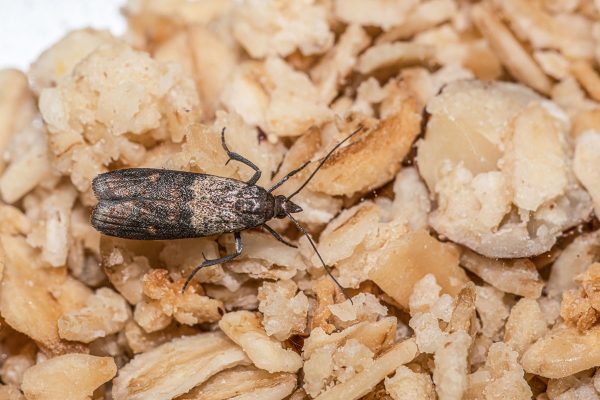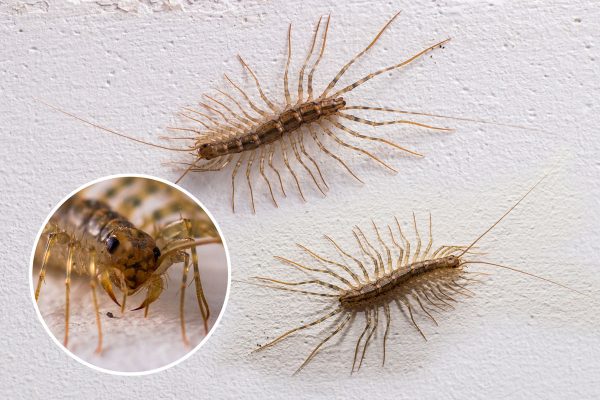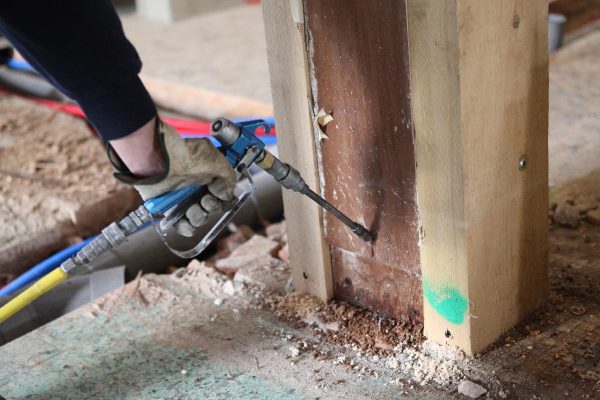With their long wings and elongated body, Indian meal moths look dangerous and intimidating. We don't want them anywhere near our house, especially since they could contaminate our food. However, aside from their destructive qualities, are they dangerous to humans? Do they also infest pets? You must be wondering about these especially if you've spotted them around your house, so we have researched answers to find out.
Indian meal moths do not bite or sting, so they technically don't pose danger to humans or pets themselves. However, they can contaminate the food in your pantry--from essentials such as bread and cereal to even pet treats.
Indian meal moths, or pantry moths, can stress and gross out everyone in your house, so it's important to know how to protect your home from them. As with all pests, prevention is key. If they manage to enter your home, you need to address it immediately. If you want to learn more about how to prevent and eliminate pantry moths, keep reading below.
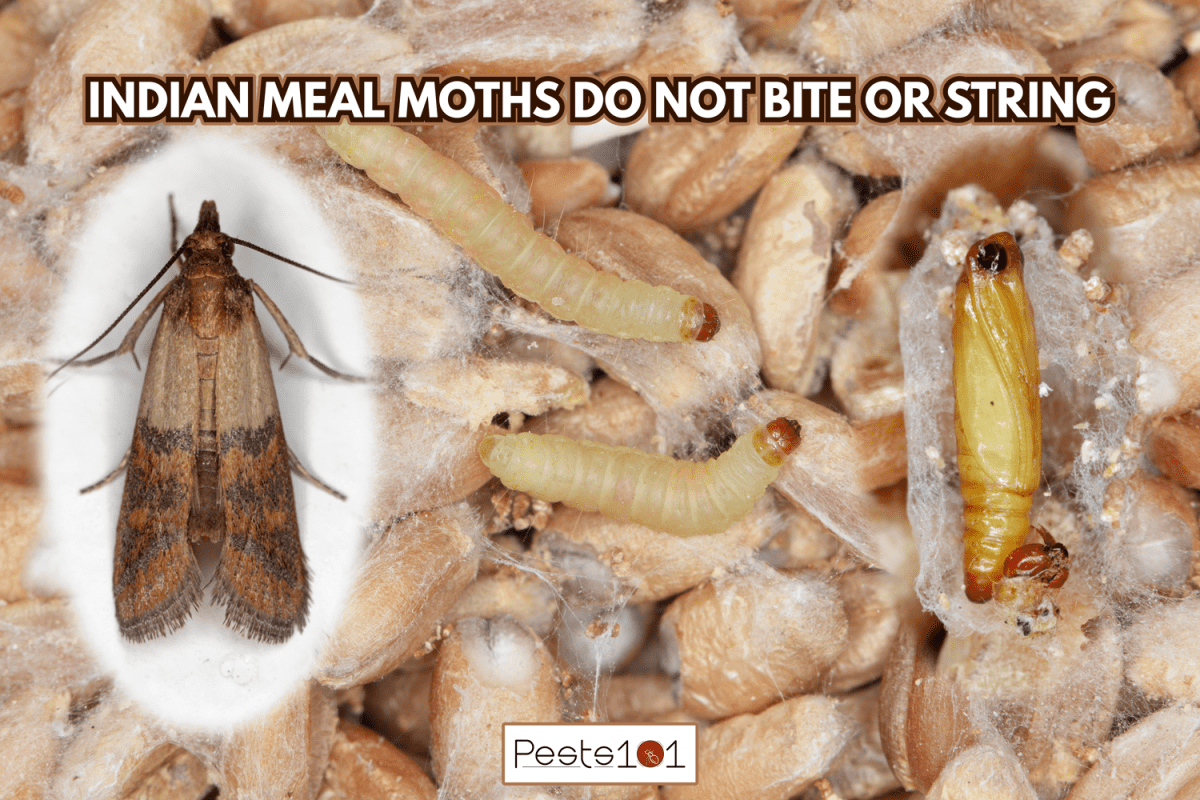
What are Indian Meal Moths?
Indian meal moths are oval-shaped insects with a wing size of about 5/8 of an inch, and a body size of 3/4 of an inch. They have a copper-colored body, often glowing in a reddish-brown color. They also come in bronze or dark grey depending on how they evolved in a particular habitat or climate.
The wingspan is half the size of their body, making it easier for flight.
Indian meal moths also have a strong sense of smell, making it possible for them to detect pantries abundant with dry food.
Indian meal moths, also known as pantry moth because of their penchant for infesting pantry food, is known to feed on dried food. This includes bread, rice grains, cereal, biscuits, dried fruit, nuts, uncooked pasta, chocolates and candies, and dry herbs.
Aside from this, they can also contaminate pet food. They are especially notorious for feeding on bird seed and dog food since they can usually digest it better.
Indian meal moths typically thrive in a tropical climate, so they are often found in warm habitats, especially in Florida. They can infest anywhere from huge food factories and grain storage areas, so it's no surprise if they somehow manage to enter your kitchen pantry.
Are Indian meal moths poisonous to food?
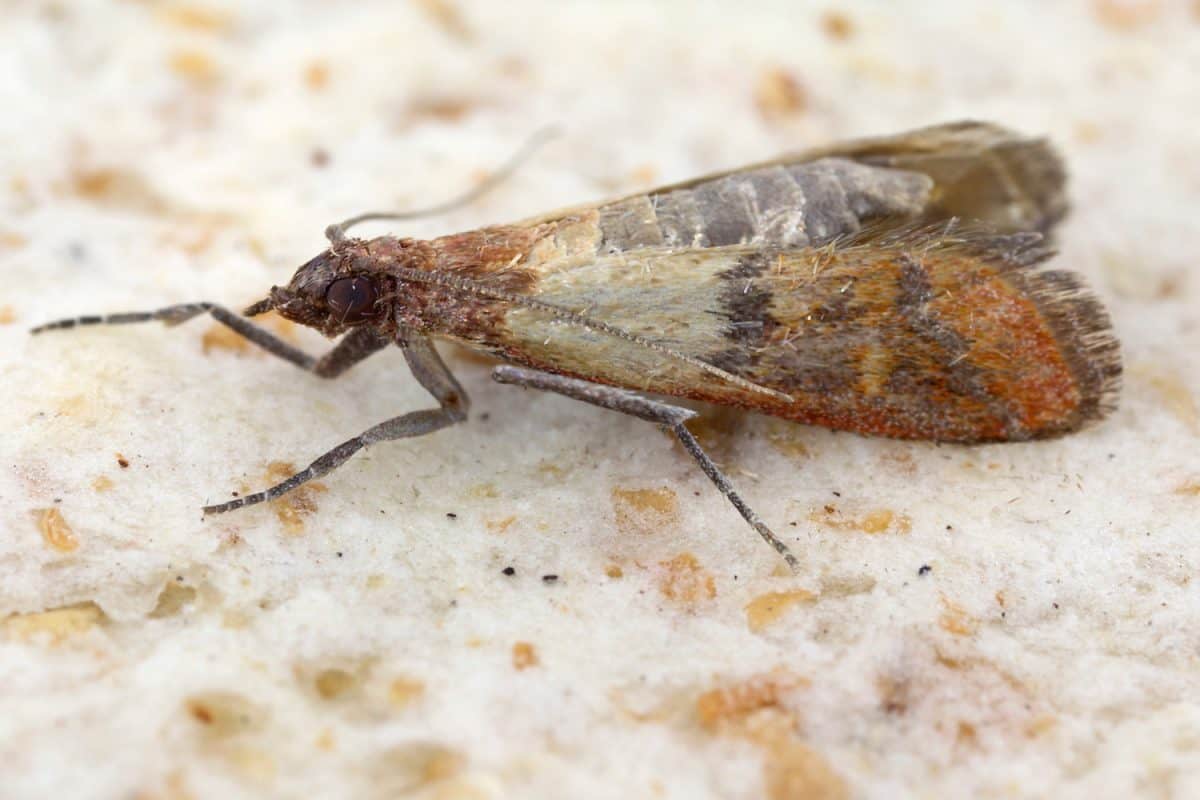
You can easily tell if your food has been infested by an Indian meal moth: you should see a silk webbing on the surface of the food, so you could easily see it and throw it out. Sometimes, pantry moths will even lay their eggs on the food, making it virtually unconsumable.
Surprisingly, however, your food doesn't become inherently poisoned once they have been infested. Pantry moths are not known to carry bacteria or viruses that may transfer to the food, so if someone accidentally ingests dry food contaminated by the pantry moth, they shouldn't experience any symptoms.
Despite not being "poisoned," the food is still contaminated. Indian meal moths have surely been to other areas, and you wouldn't want any outside and uncertain elements to be mixed with your food. For this reason, you need to throw the contaminated food immediately.
What happens if you eat the pantry moth's larvae?
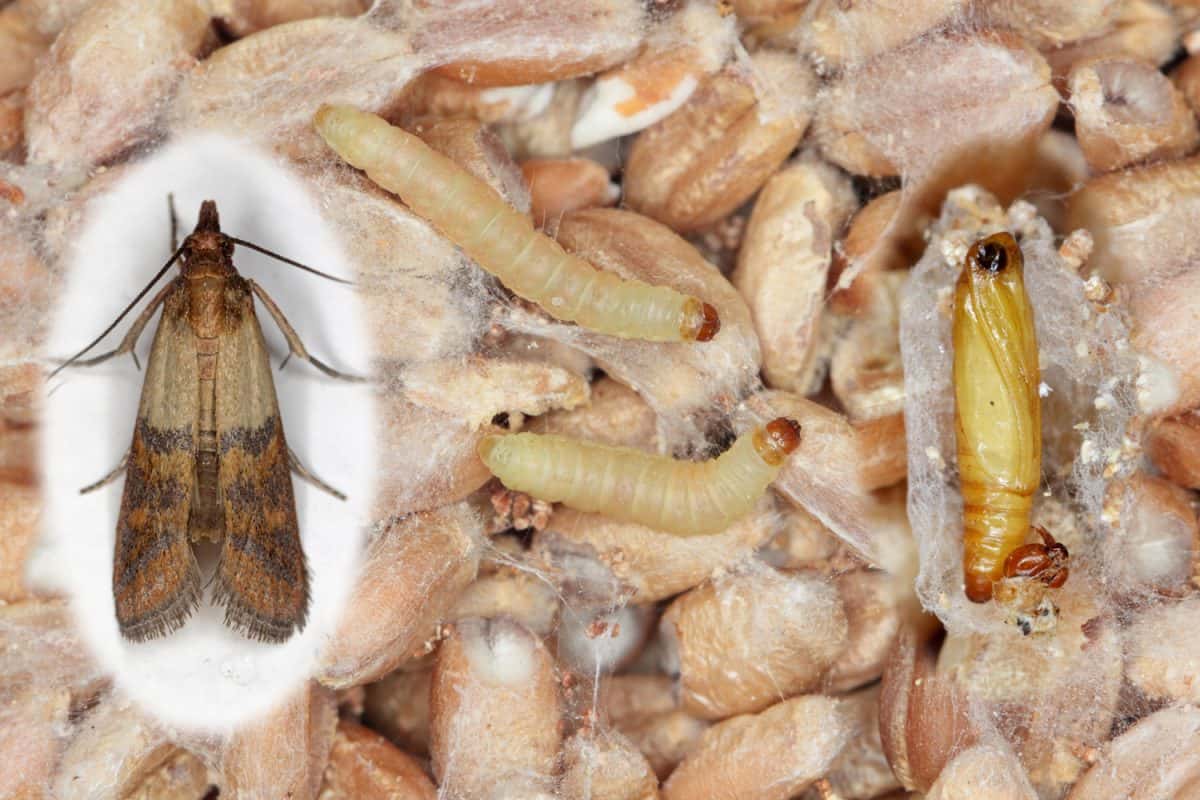
As disturbing as it may sound, humans ingest high amounts of pantry moth larvae without being aware of doing so. This is because their larvae resemble rice grains closely, and can even hide beneath flour with their light color.
Fortunately, nothing will really happen to your health if you accidentally ingest a pantry moth larvae. And, as if nature is trying to make up for the disgust, pantry moth larvae contain high levels of protein making it--ironically--even good for the body.
However, be warned--anything that has been contaminated can attract bacteria. Their silky webbing can cause the food to become moldy, so it's best to just throw the food out if they've been contaminated to prevent ingesting even the smallest amount of mold.
How to Avoid Pantry Moths
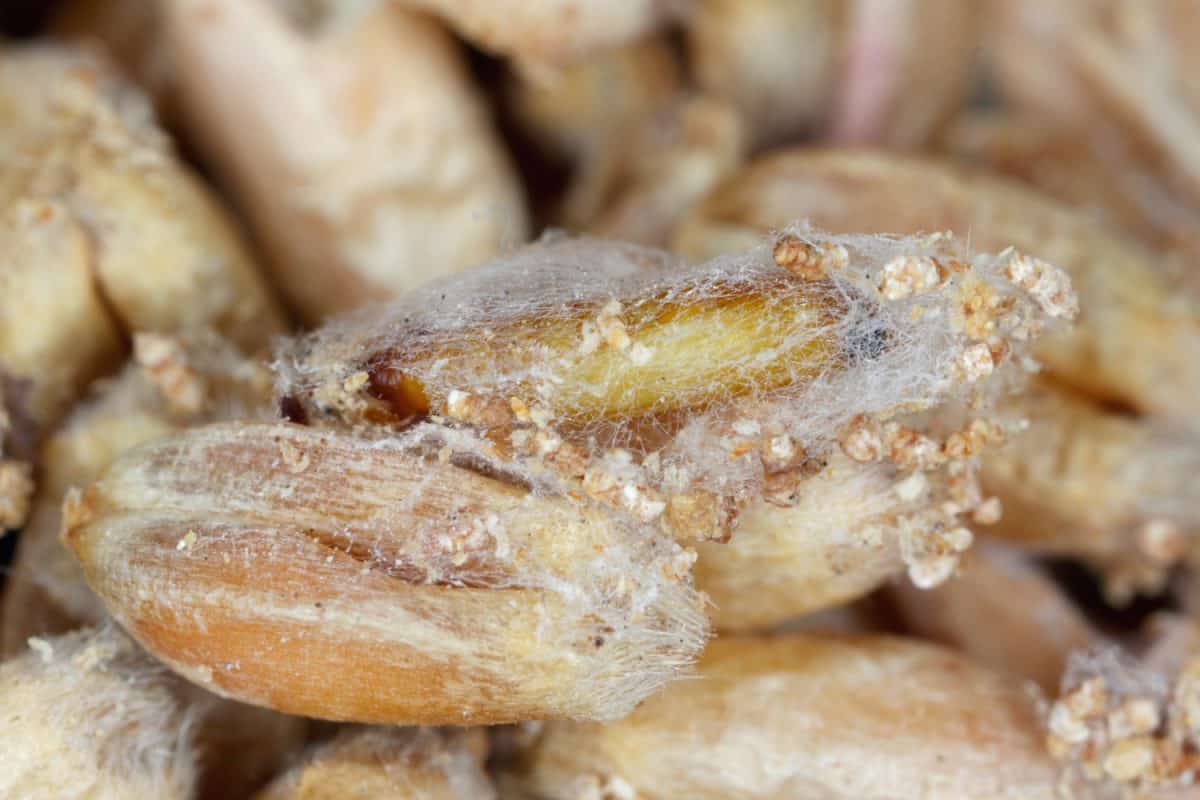
Pantry moths are more disturbing than they are dangerous, so it is best to avoid their infestation. Here are ways to prevent pantry moths from invading your kitchen pantry and contaminating your food.
Vacuum Surfaces and Corners
One way to prevent the infestation of pantry moths, or any insect, is to clean your kitchen area. Wash each nook with a soap solution, wipe it thoroughly, and allow it to dry.
Use White Vinegar
Wipe the counters and cabinets with a white vinegar solution. Simply dilute the vinegar to the water, and mix equal parts. Place it in a spray bottle and wipe the surfaces using a soft cotton cloth.
The vinegar naturally repels insects, pantry moths included. You can add a few drops of essential oils for an improved repellant quality: use eucalyptus, peppermint, citronella, or tea tree.
Doing this should also mask the strong smell of vinegar and make your kitchen space smell better.
Place Dry Food in Air-tight Containers
Placing dry food in air-tight containers will protect it from contamination even if your house may be already suffering from a pantry moth infestation. The pests won't be able to access them, and it will discourage them from infesting your kitchen.
Store and Freeze
If you suspect that the food from the grocery or market could be contaminated with pantry moth larvae, place the dry food into a plastic bag and pop them in the freezer for a week. This should be enough time to kill the eggs.
How to Deal with a Pantry Moth Infestation
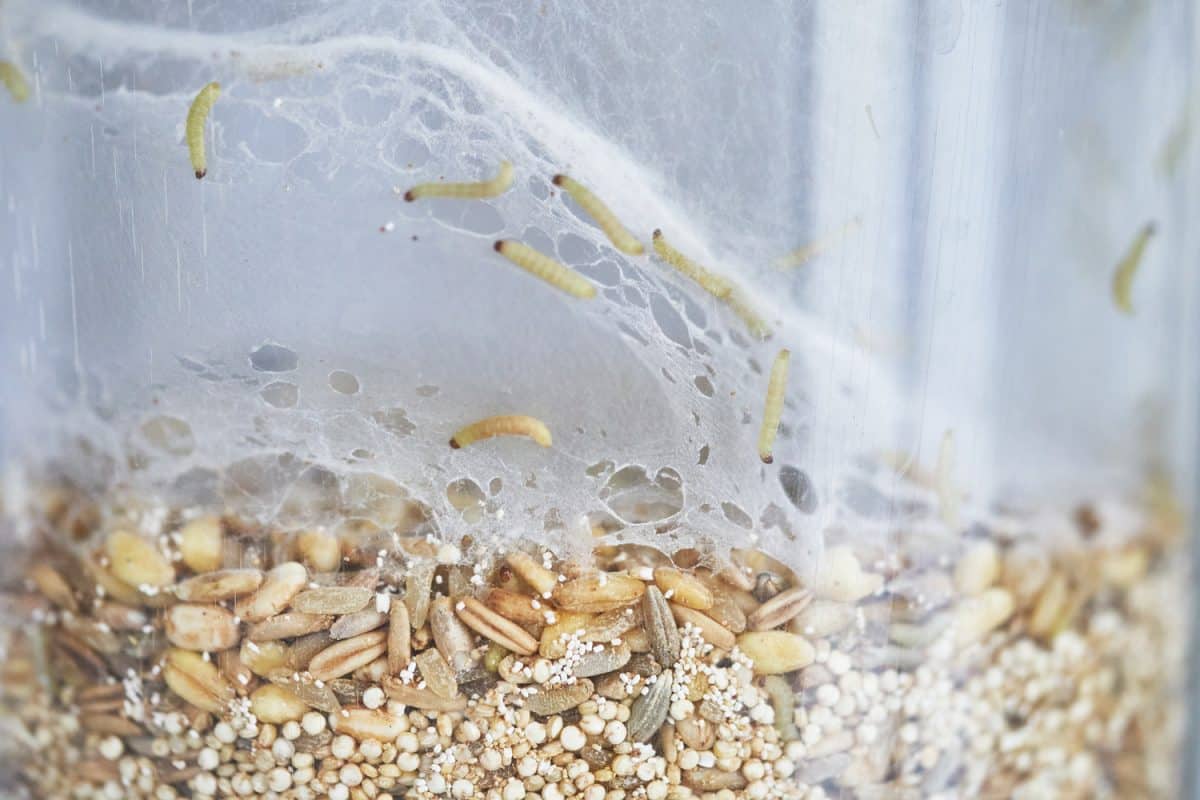
Sometimes, no matter how much we try to prevent an infestation, some of these critters still manage to crawl inside. They may have come from the most unnoticeable cracks around your home, or they may have developed and become adults in your home without you noticing.
Here is what you can do to eliminate pantry moths from your kitchen.
Empty the Cabinets
If you notice even one pantry moth, it's best to clear out the contents of your pantry to expose other pantry moths that can potentially be hiding and chewing on your food. Inspect the corners for webs and food containers for larvae or eggs.
Wash Your Containers
Whether or not some containers have been infested by pantry moths, it is still best to wash other containers to be safe. This will remove any signs of contamination.
Throw Away Infested Food
Once you see specks of webbing or eggs in dried food, throw them away immediately. They're not wasted--it's better to get another batch of dry food instead of risking eating contaminated food that may already have mold and bacteria.
Kill with Vinegar
When killing pantry moths, do not dilute the vinegar in water. Spray the pests straight from a bottle with pure white vinegar, this should be enough to eliminate them. After killing them, be sure to seal the cracks around your home to prevent another infestation.
Place Dried Food in the Fridge
If not in the freezer, you may place dried nuts and cereal permanently inside the fridge. This will lower the chances of your food being infested by pantry moths, and the cold can kill larvae and eggs from developing.
What is the pantry moth's life cycle?
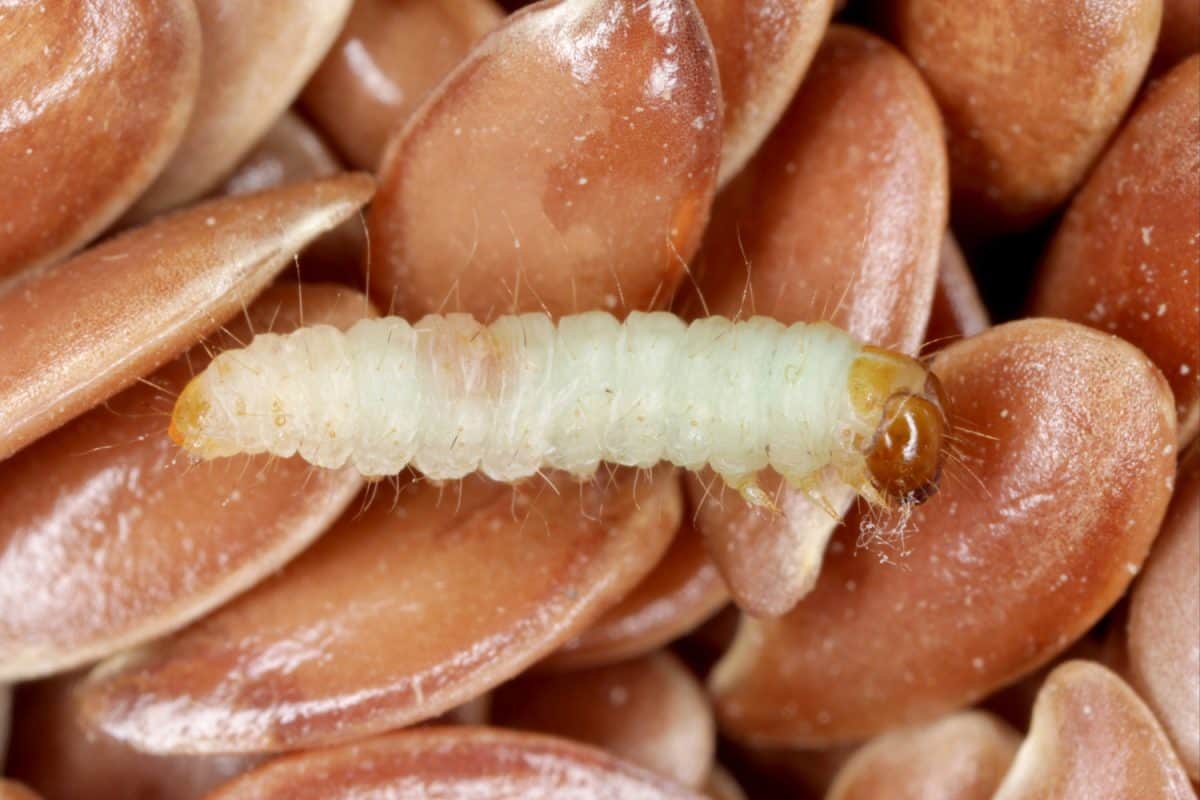
If you've spotted one adult pantry moth in your cabinets, chances are it has already laid many eggs around your kitchen that are about to hatch--which is why it's important to do a complete deep-cleaning to avoid a serious infestation.
Pantry moths go through four stages of development: They spend two days to two weeks incubating in their eggs, then eventually become larvae for 6-7 weeks. After that, they enter their pupal stage where they spend 2-3 weeks developing.
After that, they emerge as adult moths and live for about 1-2 weeks. However, during this short lifespan, they can reproduce up to 400 eggs.
Final Thoughts
Indian meal moths are pests you don't want in your kitchen. If you somehow spot them in your kitchen, avoid spraying them while they're still directly on the food.
Cleaning everything out and changing your storage method are really the only things you can do with an infestation, so as much as possible, use preventive methods to avoid any hassle in your home.
If you enjoyed this article, check out "What Time Of Day Are Termites Most Active?" and "Does Bonide Kill Fungus Gnats?" to learn more about how to manage pests.

